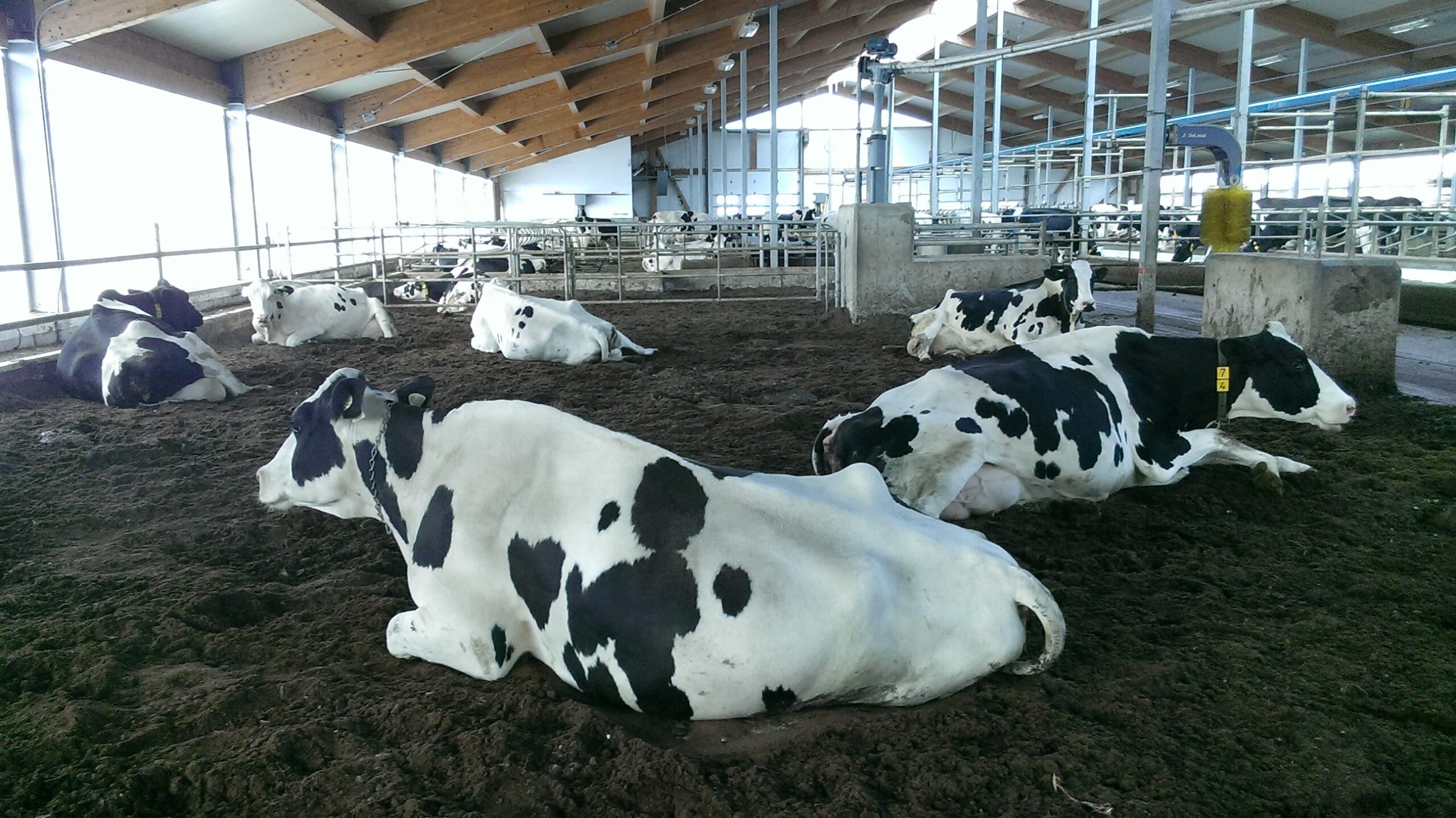Safe Use of Composted Manure as Bedding

Project entitled:
Recycled manure bedding: recommendations for safe use to protect milk quality
Simon Dufour, Denis Roy, Gilles Fecteau, Caroline Côté, Philippe Fravalo, Christopher Fernandez-Prada, Alexandre Thibodeault, Stéphane Godbout, Mylène Généreux, Pierre Ruel, Denis Potvin, Steve Adam, Mélissa DuplessisHighlights
- There is growing interest in using recycled manure as bedding (RMB) for dairy cattle.
- It is therefore imperative to assess any disadvantages that this practice might cause on animal health, human health and milk quality.
- The objective of this research project was to establish recommendations for the safe use of RMB.
- The material and data required to complete the project were obtained from a study conducted on 27 dairy herds using RMB and 61 herds using straw bedding for compari- son.
- The bacteriological quality of RMB before it is used varied from one production method to another and was generally lower than that of straw. Different microbial pathogens for cows and humans (Cryptosporidium spp., Salmonella spp.) were found more frequently in RMB than in straw. These microorganisms were never found in bulk tank milk, however.
- The number of cases of clinical mastitis was not any higher on farms using RMB; however, such cases were more often caused by Klebsiella spp., an agent that triggers very acute mastitis often resulting in the death or culling of the animal.
- Use of RMB did not affect pasteurization-resistant bacteria or spore counts in the milk, though the populations of resistant bacteria were different in milk from farms using RMB compared to those using straw.
Objectives
The project’s specific objectives are:
- To describe the various bedding production processes currently used on farms, as well the bedding’s bacte- riological and physicochemical characteristics;
- To assess the impact of the RMB on cow hygiene and comfort and on mammary gland health;
- To verify the influence of the production and management of RMB on microbial populations present in the mammary gland;
- To analyze the impact of using RMB on the micro- biota of bulk tank milk;
- To determine the survival rates of cryptosporidiosis and coccidiosis and the risk of transmitting the diseases through recycled bedding.
Results and potential benefits
Although commendable from a sustainable development perspective, the use of RMB in dairy farming presents a number of drawbacks in terms of animal and human health.
Indeed, our results demonstrated that several pathogens are capable of surviving current farm production methods. In certain cases (e.g. Cryptosporidium spp.), using RMB could potentially even magnify the transmission cycle within a herd. However, these pathogens were never found in bulk tank milk, which indicates that the measures in place at the farm’s critical control points during milk collection are sufficient to control most of the risk for consumers. On the other hand, farm workers could be at greater risk and should therefore adopt strict hygiene measures (gloves, hand washing) when handling RMB.
Our results also suggest that this type of bedding should not be used for animals under the age of six months, which are particularly sensitive to these pathogens.
The number of cases of clinical mastitis was not higher on farms using RMB; however, such cases were more often caused by Klebsiella spp., an agent that triggers very acute mastitis often resulting in the death or culling of the animal.
Furthermore, in light of the higher severity of mastitis cases observed, the use of RMB could potentially compromise the well-being of the animals if other mitigation measures are not implemented.
Lastly, although bacteria populations found in milk from farms using RMB vary, the expected impacts on dairy processing appear to be minor at the present time, especially in the case of unripened cheeses.
Innovative aspects
- Completion of project on commercial farms using recycled manure for bedding.
- Analysis of the microbiological aspect of using recycled manure bedding on milk quality.
- Identification of bacterial profiles responsible for the development of clinical mastistis on farms using recycled manure.
Professionnals trained
Annie Fréchette (masters), expertise in veterinary epidemiology at Université de Montréal.
Alexandre Jules Kennang Ouamba (PhD), expertise in food science at Université Laval.
Mérilie Gagnon (PhD), expertise in food science at Université Laval.
Marlén Irlena Lasprilla Mantilla (masters), expertise in parasitology at Université de Montréal.
Jessica Beauchemin (masters), expertise in veterinary microbiology at Université de Montréal.
For further information
The research results will be transferable to dairy farmers in the very short term (i.e., once the research project is completed). Articles will be published in Le producteur de lait québécois, Le Savoir laitier and The Milk Producer, and training sessions and conferences for users will be held (Novalait Forum Techno and Symposium sur les bovins laitiers) in collaboration with our partners at Lactanet and as part of the transfer activities of the FRQ-NT Op+Lait strategic cluster.
Financial contributions
Partnership for innovation un dairy production and dairy processing (EPI2015-2020):
- Consortium de recherche et d’innovation en bioprocédés industriels du Québec (CRIBIQ)
- Fonds de recherche Québec – Nature et technologies (FRQNT)
- Natural Sciences and Engineering Research Council of Canada (NSERC)
- Novalait
- 92 dairy farms
Total budget: $318,839